Modular Patio Furniture
When I lived in Portland, OR, I designed modular patio furniture for my terrace. The goals were to get the plants off the ground, create comfortable, versatile seating and storage space, while spending as little money as possible. I worked very carefully and economically to design everything within 3 sheets of 4’x8’ rough plywood, as well as the 12’ long 4x4 posts my previous partner had been storing. Below you see the finished seating with an added table in the center (not made by me).
Below you see the patio BEFORE.
Since the space was so constricted, I knew we would have to cut, sand, stain and finish all the pieces off site, and then assemble them on the cramped patio. We also had a very tight budget of only a couple hundred dollars. I worked in Sketchup to maximize the space and dream up as versatile a system as I could imagine. Below are some of the configurations. You can see the cube seating on the right nests into the plant shelf in the front. They can also all combine to create one larger day bed. Originally, I designed acrylic panels into the fronts of the cubes to let in light and maintain visual cohesion while storing items. I never really got around to them, however. Simpler was better.
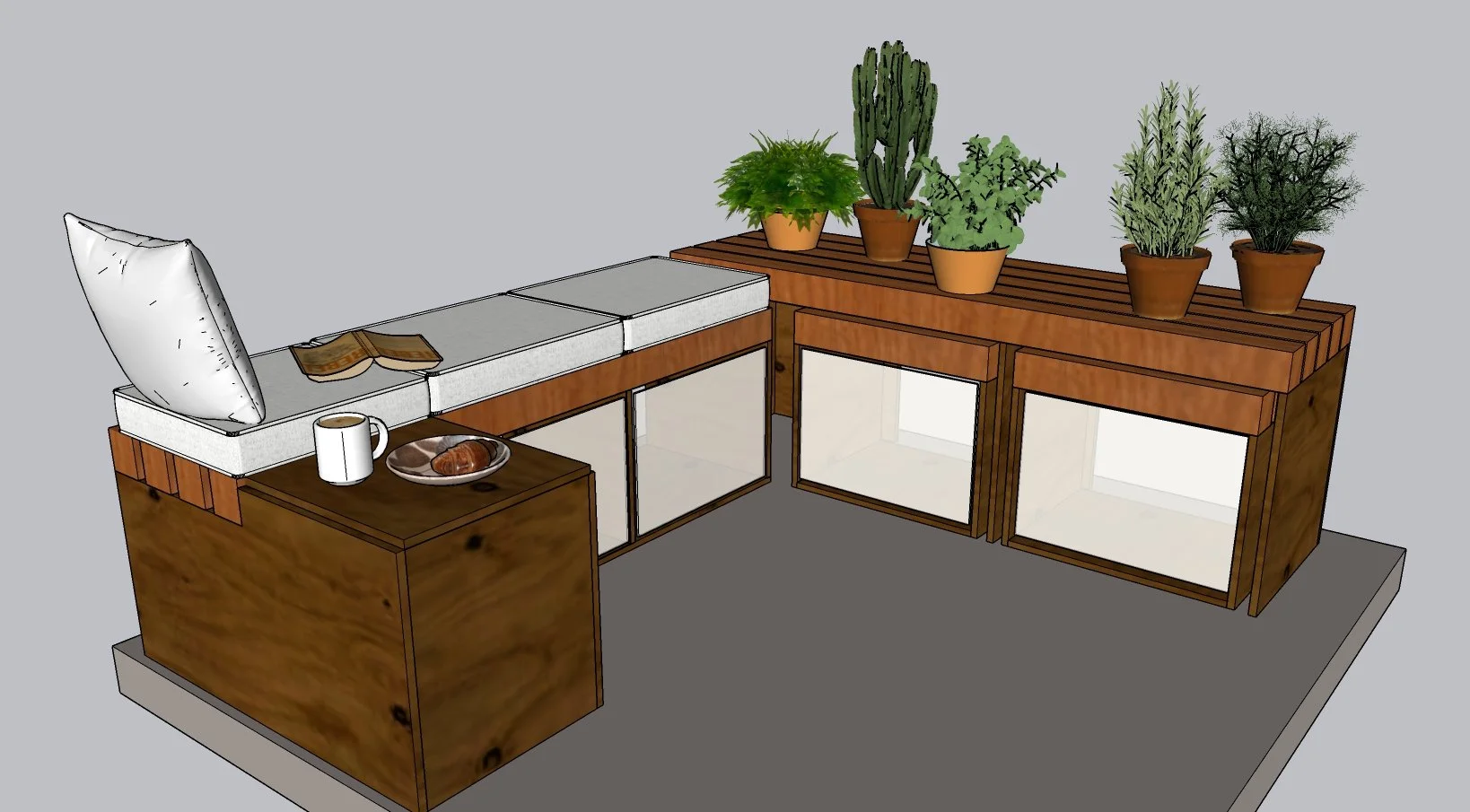
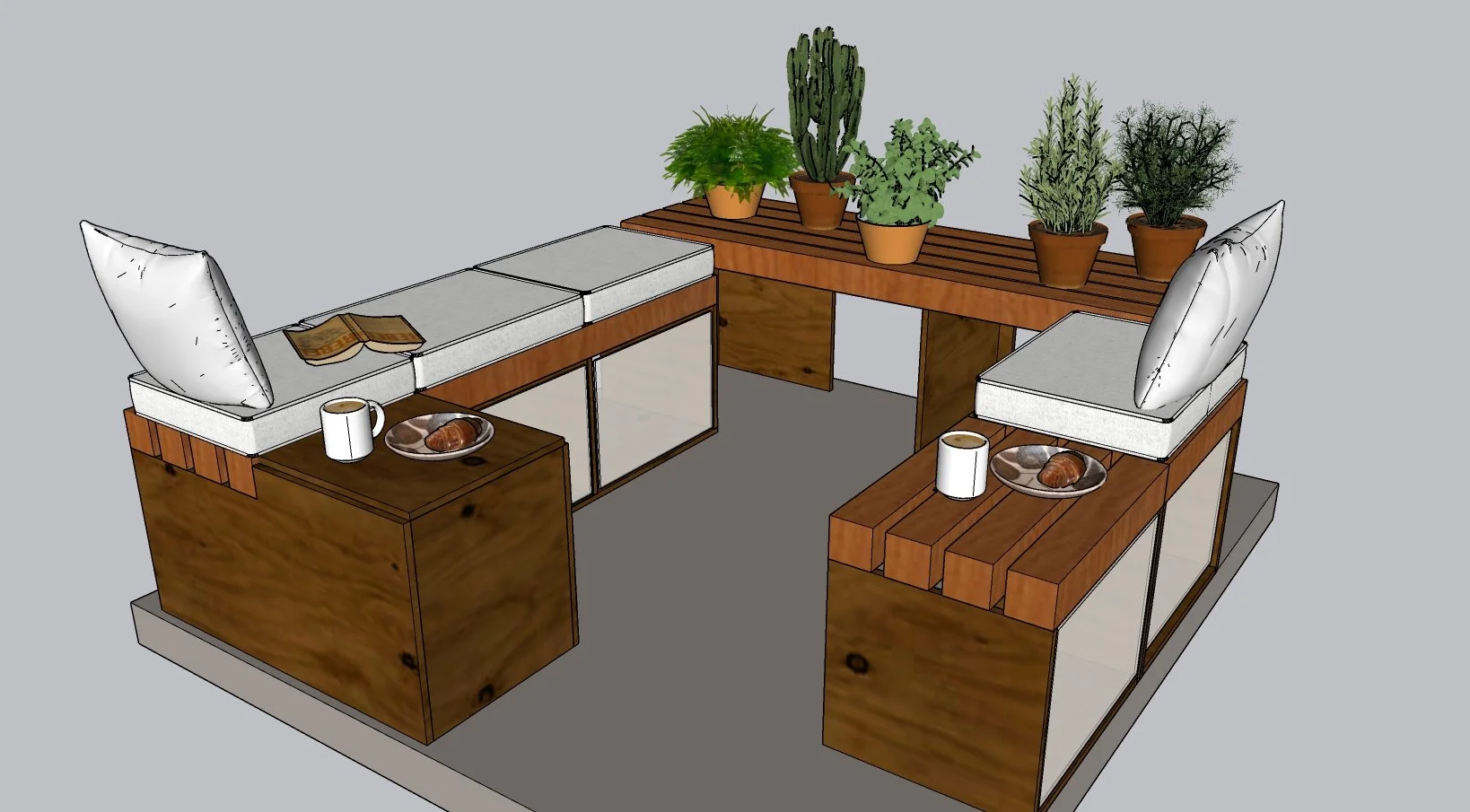


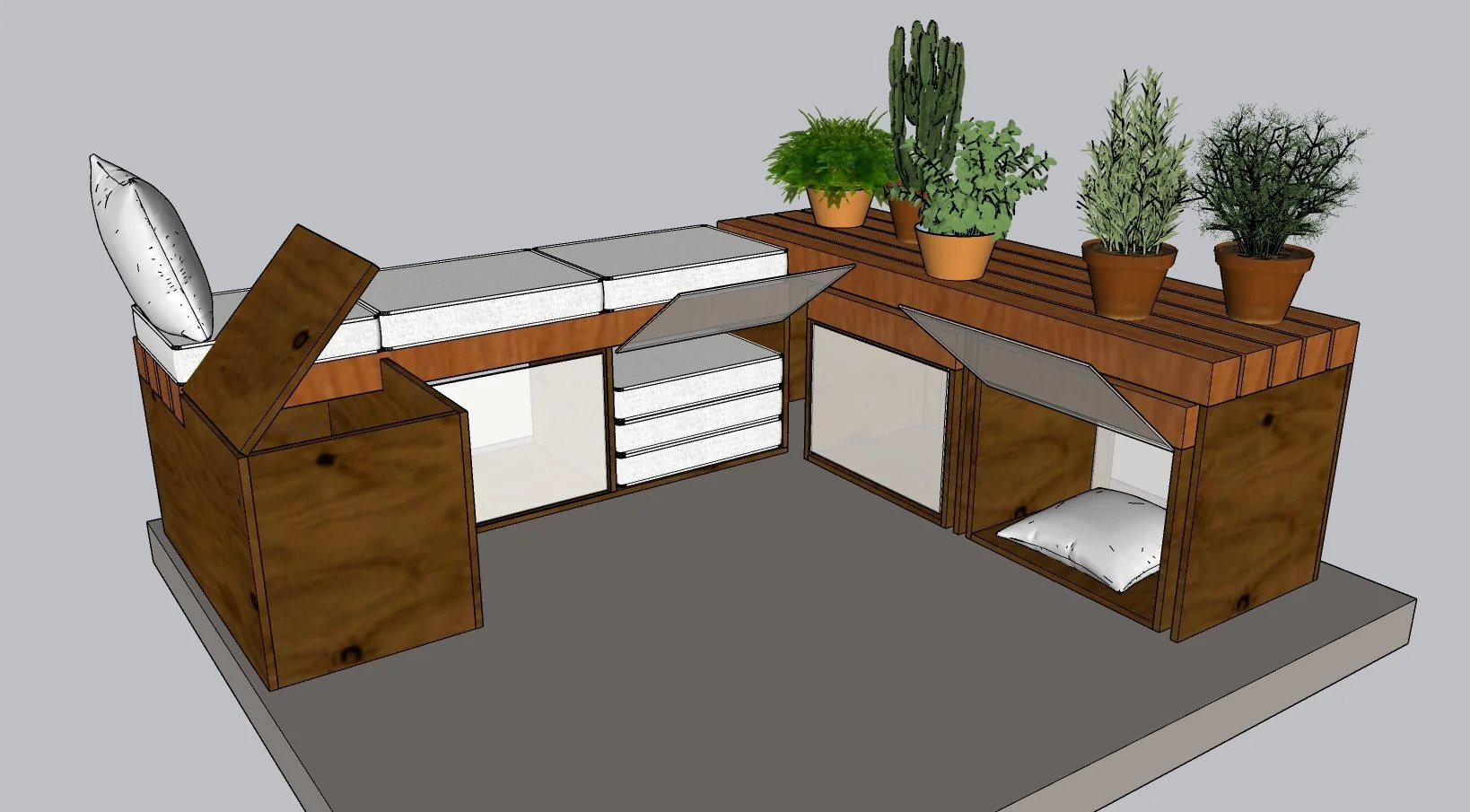
After I was happy with the Sketchup iterations, it was time to create cut guides. I printed out labeled layouts with measurements, and then we did all the cutting and sanding at a different location. We transported the pieces to the apartment and assembled on site.
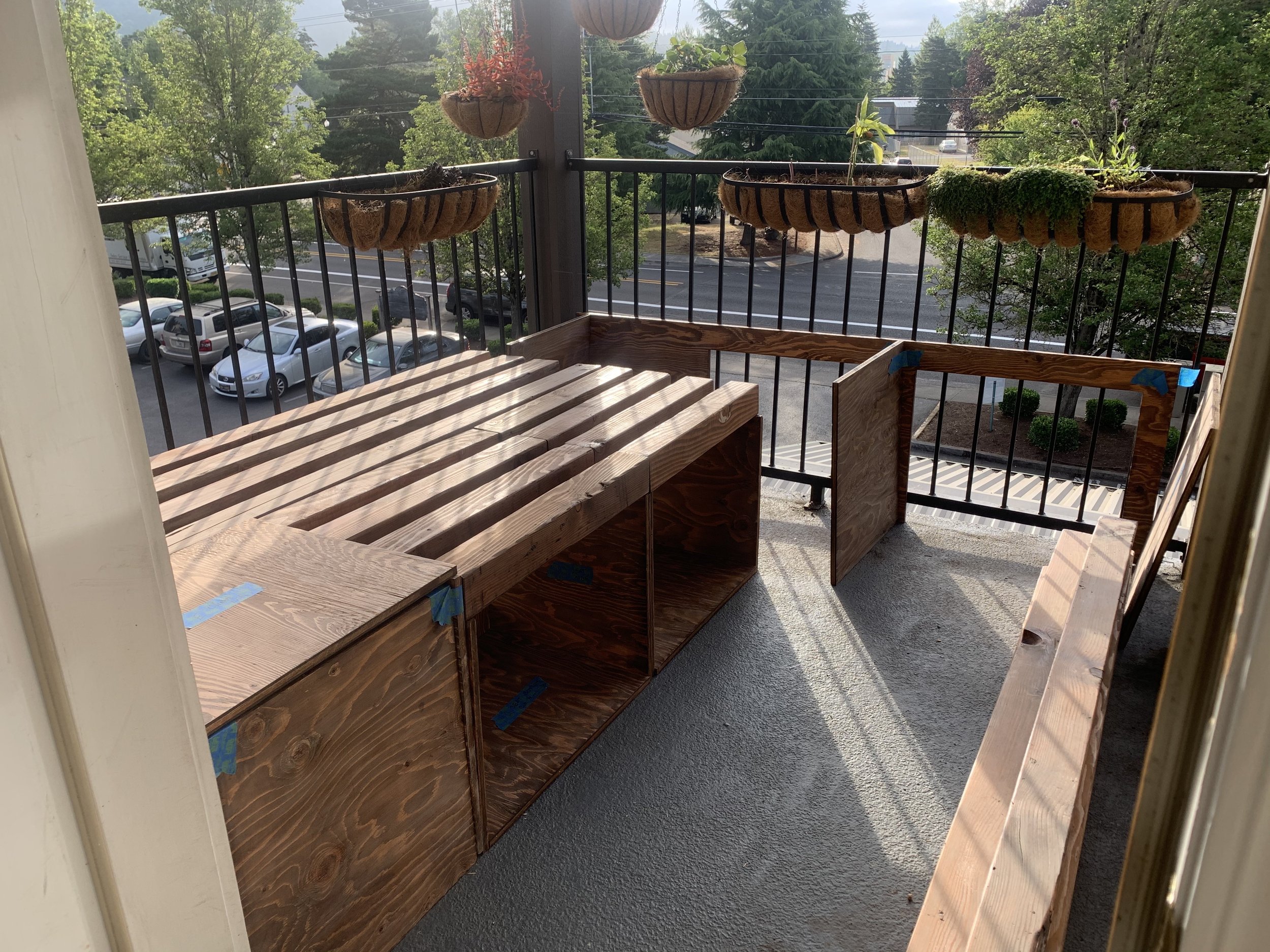


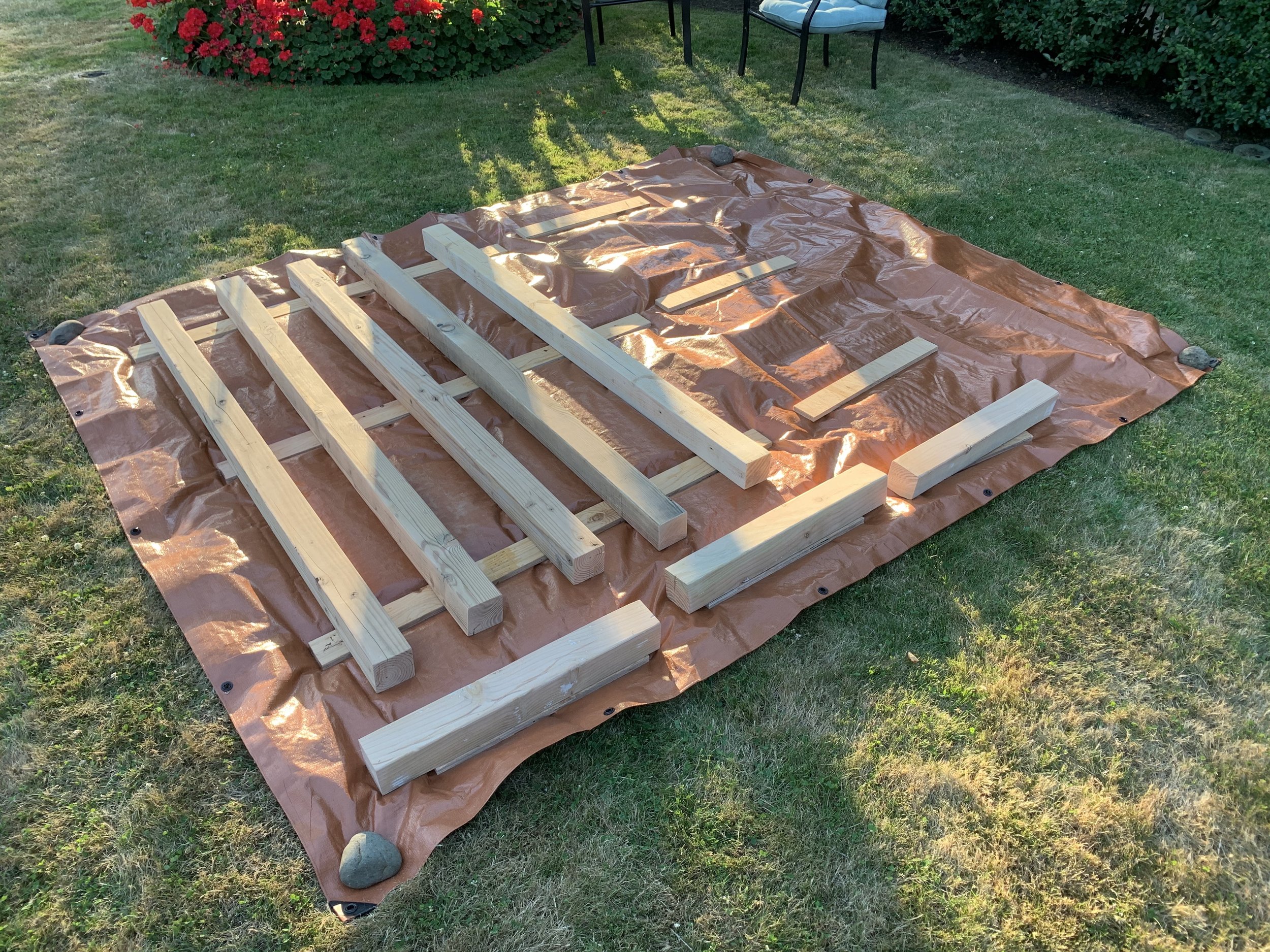

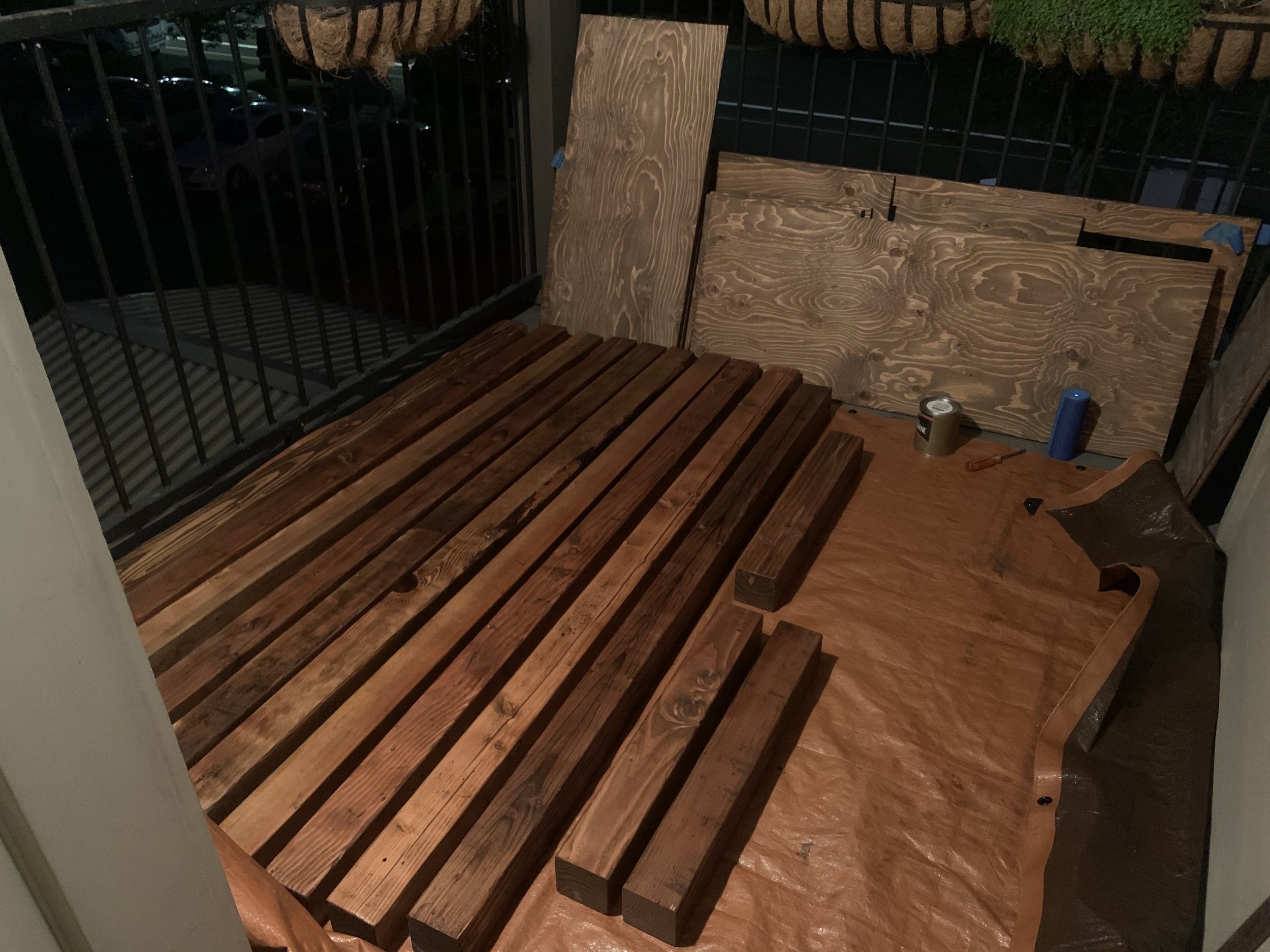
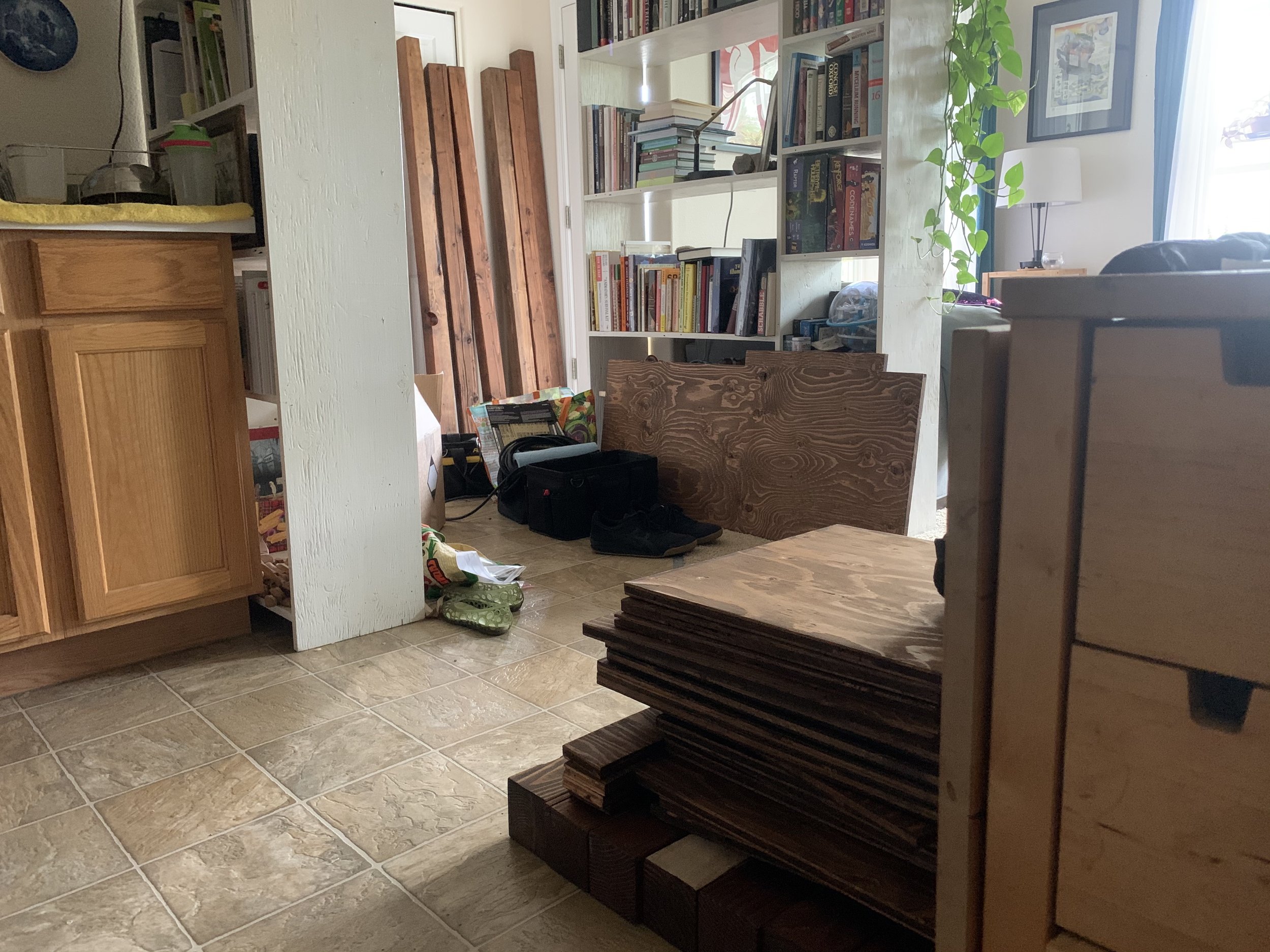

Once the pieces were built, I wanted to create custom upholstery, instead of reusing old pillows. I designed custom pillows with piping and did all the sewing myself. It was honestly much harder to make the cushions than the furniture. And after buying fabric, foam and batting… it cost more, too. I believe it was well worth the work.
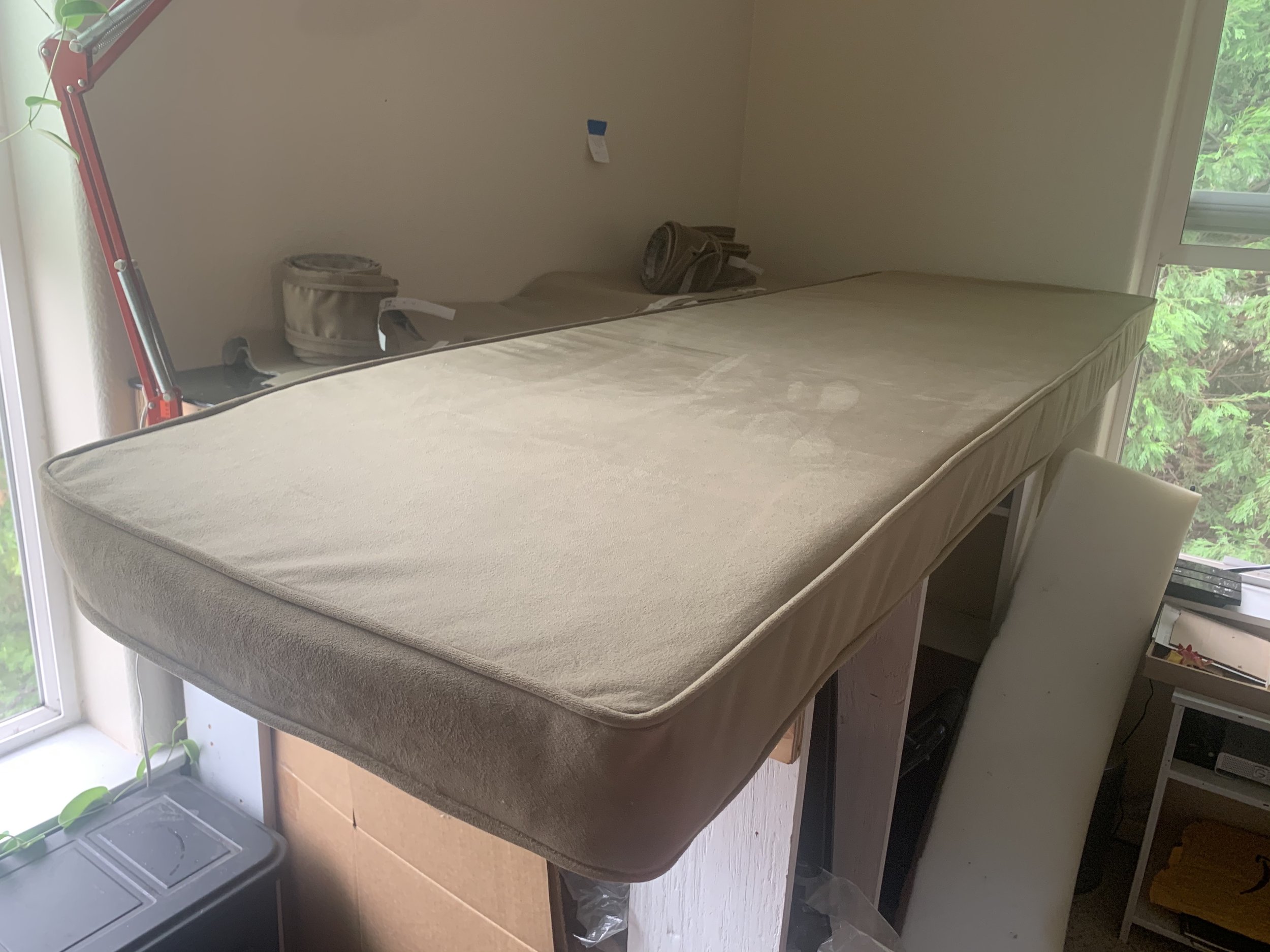


Overall, we found the furniture to be wonderfully functional and comfortable! They supported our plants and transformed the space into an area we wanted to be in all the time. Even the plants were happier! This project was about creating the most experiential value from the cheapest, simplest resources. It wasn’t impressive carpentry, but it was highly utilitarian, and recycled easily when we wanted to deconstruct it eventually.





